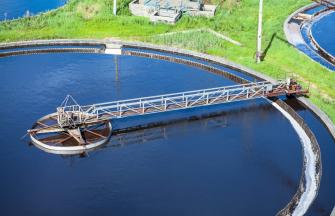
Do you have a question about this application? Ask our specialists
Contact us
The Importance of Wastewater Treatment
Wastewater and domestic sewage originating from residential, commercial, and some industrial sources can contain a variety of pathogens, pollutants, organic matter, metals, pharmaceutical residues, and other contaminants that require treatment before the water can be safely reused or discharged to bodies of water. Without proper treatment, these impurities can have devastating impacts on waterways, aquatic ecosystems, and public health.
Biochemical Oxygen Demand (BOD) is a measure of the amount of oxygen depleted from water due to the breakdown of organic matter by bacteria. BOD is often used to help determine the effectiveness of municipal wastewater treatment plants, as clean water needs a certain amount of oxygen and carbon dioxide to be present before it can be disposed of safely.
Our Role in Municipal Water Treatment & Biosolids Management
What We Do
Carmeuse and our affiliates support municipal wastewater treatment from End-2-End.
To keep our natural waters clean and our environment safe, quicklime and related calcium-based products have been used for decades to help remove contaminants from municipal wastewater and for biosolids management.
Municipal water treatment plants often use high calcium quicklime, high calcium hydrated lime, or CALSAFE® lime slurry in their wastewater treatment and sludge stabilization processes. These lime-based products can be used to adjust pH and remove suspended solids from wastewater. Quicklime can also be used to help dewater sewage solids, or sludge, and for stabilization of the resulting biosolids.
To learn even more about the role lime and lime slurry products play in wastewater treatment, view our article Lime Slurry for Water Treatment.
How It Helps
- pH Adjustment – Lime products are alkali materials with a high pH and can be used in wastewater treatment systems to raise pH levels and neutralize acidic waters.
- Coagulation of Suspended Solids – Lime can be used in combination with aluminum and iron salts to promote coagulation and flocculation of suspended solids. This helps remove impurities more efficiently, improving the performance of water clarification units.
- Phosphorus Removal – Lime use can help remove phosphorus nutrients from wastewater which can reduce the frequency and severity of harmful algal blooms.
- Sludge Stabilization – High Calcium Quicklime can be used to treat and dry biosolids derived from the wastewater treatment process. Lime use can also improve the density and handling characteristics of biosolids.
- Odor Reduction – Lime can reduce biological waste odors by reacting with sulfur species and keeping the offending odorous substances in a dissociated form.
Lime Slaking Systems & Upgrades
Over time, equipment at municipal wastewater treatment facilities may need updated or replaced due to normal wear and tear or for the integration of new technologies. Carmeuse supplies advanced equipment solutions for lime storage, handling, and slaking through our wholly owned subsidiary, Carmeuse Systems.
Our expert engineers can design the right solution to keep your water treatment operation running smoothly, from new lime handling systems and slakers, to retrofits and upgrades for your existing equipment. For additional information related to our lime handling expertise, visit the Carmeuse Systems website.
Supplying Lime for Various Applications

Lime vs Caustic Soda for Water Treatment
There are a number of considerations to take into account when comparing the use of lime products to the use of caustic soda (sodium hydroxide) in water treatment.
When compared to caustic soda, lime is often the most cost-effective product for use in water treatment plants, as quicklime has a stronger neutralizing capacity per dry ton. Slaked lime is also considered a safer alternative than caustic soda for use in water treatment processes for acid neutralization, pH adjustment. While safety measures are required when handling lime, caustic soda is more corrosive and is extremely hazardous in terms of exposure to the skin and eyes, with the potential to cause chemical burns.
For a thorough comparison on using lime versus caustic soda in water treatment, read our article, Switching to Calcium Products from Caustic Soda.










